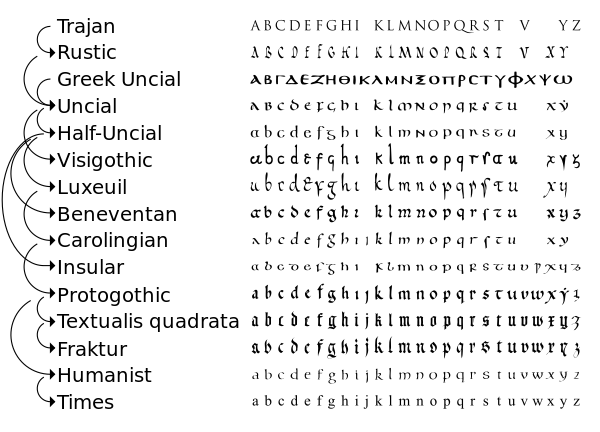The Age of Literacy: A Visual
Point of View
Turning sounds into
visible objects radically altered the symbolic environment. Suddenly, the eye
became the heir apparent. Hearing diminished in value and quality. To disagree
with this assessment merely illustrates McLuhan’s belief that a private,
left-brain “point of view” becomes possible in a world that encourages the
visual practice of reading texts.
In this era, people
will use their eyes than hearing. People will now practice to read books. Words
are no longer alive and immediate. They can be read and reread.
The picture below is the Phonetic Alphabet that was used to make it possible.
By at least the 8th century BCE the Greeks borrowed the
Phoenician alphabet and adapted
it to their own language, According to Greek legends transmitted by Herodotus,
the alphabet was brought
from Phoenicia to Greece by Cadmos.
People on this era had
more privacy than tribal era. You can get information alone just by reading and
reading than in tribal era when you are not in the group you can’t get the
information. When people learned to read, they become independent
thinkers. People had the freedom to be
alienated from others and from the immediacy of their surroundings.
People used
text and alphabets to pass the information from the author and the reader.
Proximity became less important no matter how many kilometers. People can still
receive the information. Words were no longer immediate and alive.
To know more about the Age of Literacy, click the clip below made by Mary Hermosa (June 25,2017)






No comments:
Post a Comment